- WWD Dashboard
- Financials
- Filings
-
Holdings
- Transcripts
- ETFs
- Insider
- Institutional
- Shorts
-
DEF 14A Filing
Woodward (WWD) DEF 14ADefinitive proxy
Filed: 12 Dec 06, 12:00am
| Check the appropriate box: | ||
| o | Preliminary Proxy Statement | |
| o | Confidential, for Use of the Commission Only | |
| (as permitted by Rule 14a-6(e)(2)) | ||
| þ | Definitive Proxy Statement | |
| o | Definitive Additional Materials | |
| o | Soliciting Material under Rule 14a-12 | |
| Payment of Filing Fee (Check the appropriate box): | ||||||
| þ | No fee required. | |||||
| o | Fee computed on table below per Exchange Act Rules 14a-6(i)(4) and 0-11 | |||||
| 1 | ) | Title of each class of securities to which transaction applies: | ||||
| 2 | ) | Aggregate number of securities to which transaction applies: | ||||
| 3 | ) | Per unit price or other underlying value of transaction computed pursuant to Exchange Act Rule 0-11 (Set forth the amount on which the filing fee is calculated and state how it was determined): | ||||
| 4 | ) | Proposed maximum aggregate value of transaction: | ||||
| 5 | ) | Total fee paid: | ||||
| o | Fee paid previously with preliminary materials. | |||||
| o | Check box if any part of the fee is offset as provided by Exchange Act Rule 0-11(a)(2) and identify the filing for which the offsetting fee was paid previously. Identify the previous filing by registration statement number, or the form or schedule and the date of its filing. | |||||
| 1 | ) | Amount Previously Paid: | ||||
| 2 | ) | Form, Schedule or Registration Statement No.: | ||||
| 3 | ) | Filing Party: | ||||
| 4 | ) | Date Filed: | ||||
 | Woodward Governor Company 5001 North Second Street P.O. Box 7001 Rockford, IL 61125-7001 USA Tel: 815-877-7441 Fax: 815-639-6033 |

3
| Wednesday, January 24, 2007 | The purpose of our Annual Meeting is to: 1. Elect three directors to serve for a term of three years each; 2. Consider and act upon a proposal to ratify the appointment of PricewaterhouseCoopers LLP as independent registered public accounting firm for the fiscal year ending September 30, 2007; and 3. Transact other business that properly comes before the meeting, or any postponement or adjournment thereof. Shareholders who owned Woodward stock at the close of business on November 27, 2006, are entitled to vote at the meeting, or any postponement or adjournment thereof. By Order of the Board of Directors, WOODWARD GOVERNOR COMPANY  Carol J. Manning Corporate Secretary December 12, 2006 | |
| YOUR VOTE IS IMPORTANT | ||
| Even if you plan to attend the meeting in person, please date, sign, and return your | ||
| proxy card in the enclosed envelope, or vote via telephone or the Internet, as soon as | ||
| possible. Prompt response is helpful and your cooperation will be appreciated. | ||
4
| 5 | ||||
| 6 | ||||
| 7 | ||||
| 7 | ||||
| 9 | ||||
| 9 | ||||
| 10 | ||||
| 12 | ||||
| 13 | ||||
| 13 | ||||
| 14 | ||||
| 14 | ||||
| 14 | ||||
| 16 | ||||
| 17 | ||||
| 18 | ||||
| 19 | ||||
| 19 | ||||
| 20 | ||||
| 20 | ||||
| 20 | ||||
| 21 | ||||
| A-1 | ||||
| B-1 | ||||
| You may obtain a free copy of our Annual Report on Form 10-K for the year ended September 30, 2006, filed with the Securities and Exchange Commission. Please contact the Corporate Secretary, Woodward Governor Company, 5001 North Second Street, Rockford, Illinois 61111 or email investorrelations@woodward.com. This report is also available at www.woodward.com. |
5
| Our Board of Directors is soliciting your proxy to vote at our annual meeting of shareholders (or at any postponement or adjournment of the meeting). This proxy statement summarizes the information you need to know to vote at the meeting. | |
| We began mailing this proxy statement and the enclosed proxy card on or about December 12, 2006, to all shareholders entitled to vote. The Woodward Governor Company Annual Report, which includes our financial statements, is being sent with this proxy statement. The financial statements contained in the Woodward Governor Company Annual Report are not deemed material to the exercise of prudent judgment in regard to the matters to be acted upon at the annual meeting, and, therefore, are not incorporated by reference into this proxy statement. | |
| Shareholders who owned Woodward common stock at the close of business on the record date, November 27, 2006, are entitled to vote at the meeting. As of the record date, there were 34,155,337 shares outstanding. | |
| Each share of Woodward Common Stock that you own entitles you to one vote, except for the election of directors, in which you may cumulate your votes. Since three directors are standing for election, you will be entitled to three director votes for each share of stock you own. Of this total, you may choose how many votes you wish to cast for each director. | |
| Woodward offers shareholders the opportunity to vote by mail, by telephone, or via the Internet. Instructions to use these methods are set forth on the enclosed proxy card. | |
| If you vote by telephone or via the Internet, please have your proxy or voting instruction card available. A telephone or Internet vote authorizes the named proxies in the same manner as if you marked, signed, and returned the card by mail. Voting by telephone and via the Internet are valid proxy voting methods under the laws of Delaware (our state of incorporation) and Woodward Bylaws. | |
| If you properly fill in your proxy card and send it to us in time to vote, one of the individuals named on your proxy card (your “proxy”) will vote your shares as you have directed. If you sign the proxy card but do not make specific choices, your proxy will follow the Board’s recommendations and vote your shares: | |
| “FOR” the election of the Board’s nominees to the Board of Directors; and | |
| “FOR” the proposal to ratify the appointment of PricewaterhouseCoopers LLP as independent registered public accounting firm. | |
| If any other matter is presented at the meeting, your proxy will vote in accordance with his or her best judgment. At the time this proxy statement went to press, we knew of no other matters to be acted on at the meeting. | |
| You may revoke your proxy by: |
| • | entering a new vote by telephone, over the Internet, or by signing and returning another signed proxy card at a later date, | |
| • | notifying our Corporate Secretary in writing before the meeting that you have revoked your proxy, or | |
| • | voting in person at the meeting. |
| If you want to give your written proxy to someone other than individuals named on the proxy card: |
| • | cross out the individuals named and insert the name of the individual you are authorizing to vote, or | |
| • | provide a written authorization to the individual you are authorizing to vote along with your proxy card. |
| Concerning the issues submitted to the shareholders, votes required for approval are as follows: | |
| Proposal 1 — Directors are elected by a plurality vote of shares present at the meeting, meaning that the three director nominees receiving the most votes will be elected. | |
| Proposal 2 — Ratification of the appointment of PricewaterhouseCoopers LLP as independent registered public accounting firm is by an affirmative vote of the majority of shares present at the meeting and entitled to vote. | |
| A quorum of shareholders is necessary to hold a valid meeting. The presence, in person or by proxy, at the meeting of holders of shares representing a majority of the votes of the Common Stock entitled to vote constitutes a quorum. Abstentions and broker non-votes are counted as present for establishing a quorum. A broker non-vote occurs when a broker votes on some matters on the proxy card but not on others because he or she is not permitted to vote on that item absent instruction from the beneficial owner of the shares and no instruction is given. Abstentions with respect to matters other than the election of directors have the same effect as votes against a matter because they are considered present and entitled to vote, but are not voted. Broker non-votes will have no effect on the vote. |
6
| Structure | Our Board of Directors is divided into three classes for purposes of election. One class is elected at each annual meeting of shareholders to serve for a three-year term. | |
| Each of the directors standing for election at the 2006 Annual Meeting of Shareholders has been nominated by the Board of Directors at the recommendation of the Nominating and Governance Committee to hold office for a three-year term expiring in 2010 or when his or her successor is elected. Other directors are not up for election at this meeting and will continue in office for the remainder of their terms. | ||
| If a nominee is unavailable for election, proxy holders will vote for another nominee proposed by the Nominating and Governance Committee. |
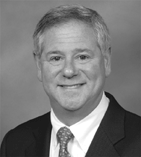 | John D. Cohn Age: 52 Senior Vice President, Strategic Development and Communications, of Rockwell Automation, Inc., a global provider of industrial automation power, control and information solutions. Mr. Cohn has been a director of the Company since 2002. | |
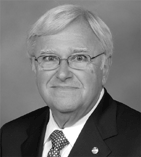 | Michael H. Joyce Age: 66 Mr. Joyce retired as President and Chief Operating Officer of Twin Disc, Inc. on July 31, 2006. Other directorships: The Oilgear Company. Mr. Joyce has been a director of the Company since 2000. | |
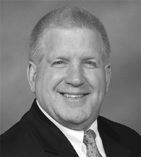 | James R. Rulseh Age: 51 Group Vice President of Modine Manufacturing Company, a specialist in thermal management products, bringing heating and cooling technology to diversified markets. Other directorships: Proliance International, Inc. Mr. Rulseh has been a director of the Company since 2002. | |
7
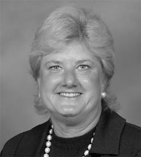 | Mary L. Petrovich Age: 43 Chief Executive Officer of AxleTech International, a supplier of off-highway and specialty vehicle drive train systems and components. Ms. Petrovich has been a director of the Company since 2002. | |
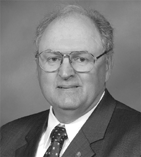 | Larry E. Rittenberg Age: 60 PhD, CIA, CPA, Ernst & Young Professor of Accounting & Information Systems at the University of Wisconsin. Mr. Rittenberg has been a director of the Company since 2004. | |
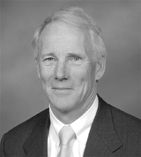 | Michael T. Yonker Age: 64 Retired President and Chief Executive Officer of Portec, Inc., which had operations in the construction equipment, materials handling and railroad products industries. Other directorships: Modine Manufacturing Company, Inc., Emcor Group, Inc. and Proliance International, Inc. Mr. Yonker has been a director of the Company since 1993. | |
8
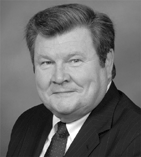 | Paul Donovan Age: 59 Retired Executive Vice President and Chief Financial Officer of Wisconsin Energy Corporation. Other directorships: AMCORE Financial, Inc. and CLARCOR. Mr. Donovan has been a director of the Company since 2000. | |
 | Thomas A. Gendron Age: 45 President and Chief Executive Officer of the Company since July 1, 2005; previously served as President and Chief Operating Officer of the Company from September 2002 until July 1, 2005 and as Vice President, Industrial Controls from February 1992 until September 2002. Mr. Gendron has been a director of the Company since 2005. | |
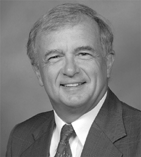 | John A. Halbrook Age: 61 Chairman of the Board of Directors of the Company; previously served as Chief Executive Officer of the Company until July 1, 2005. Other directorships: AMCORE Financial, Inc. and HNI Corporation. Mr. Halbrook has been a director of the Company since 1991. | |
| Woodward’s policies and practices reflect corporate governance initiatives that are compliant with the listing requirements of The Nasdaq Stock Market (Nasdaq) and the corporate governance requirements of the Sarbanes-Oxley Act of 2002. Woodward maintains a corporate governance page on its website at www.woodward.com that can be accessed by clicking on “Investor Information” and then on “Corporate Governance.” Included on this site are the following documents adopted by our Board of Directors: Director Guidelines; Executive / Director Stock Ownership Guidelines; charters for its Audit, Compensation, Executive, and Nominating and Governance Committees; Woodward Codes of Business Conduct and Ethics for directors, officers, and members; and Woodward Code of Ethics for Senior Financial Officers and Other Finance Members. |
| The Board of Directors has determined that each member of the Board of Directors other than Mr. Halbrook and Mr. Gendron is independent under the criteria established by Nasdaq for independent board members. In addition, the Board of Directors has determined that the members of the Audit Committee meet the additional independence criteria required for audit committee membership. |
9
| The Board of Directors met six times in fiscal 2006; all incumbent directors attended more than 75 percent of the aggregate of the total meetings of the Board of Directors and all committees of the Board on which they served. Directors are invited, but are not required, to attend annual meetings of shareholders. All directors except Paul Donovan attended the Company’s last annual meeting of shareholders. | |
| All actions by committees are reported to the Board at the next scheduled meeting. |
| Committee Membership |
| Nominating | ||||||||||||||||
| Name | Audit | Compensation | Executive | and Governance | ||||||||||||
| John D. Cohn | • | • | ||||||||||||||
| Paul Donovan | • | * | • | • | ||||||||||||
| Thomas A. Gendron | • | |||||||||||||||
| John A. Halbrook | • | * | ||||||||||||||
| Michael H. Joyce | • | • | * | |||||||||||||
| Mary L. Petrovich | • | • | ||||||||||||||
| Larry E. Rittenberg | • | • | ||||||||||||||
| James R. Rulseh | • | • | ||||||||||||||
| Michael T. Yonker | • | • | * | • | ||||||||||||
| Audit Committee | The Audit Committee oversees and monitors management’s and the independent registered public accounting firm’s participation in the financial reporting process. The Committee operates under a Charter that more fully describes the responsibilities of the Committee, a copy of which is attached as Exhibit B. Consistent with Nasdaq’s independent director and Audit Committee listing standards, and in accordance with the Committee Charter, all members of the Audit Committee are independent directors. The Board of Directors has determined that all members of the Audit Committee are Audit Committee Financial Experts, as the Securities and Exchange Commission defines that term. The Committee held five meetings in fiscal 2006. | |
| Compensation Committee | The Compensation Committee recommends the base compensation of Woodward’s executive officers and key leaders, and evaluates the performance of and reviews the results of the annual member evaluation for those individuals. The Committee administers long-term management incentive compensation and the 2006 Omnibus Incentive Plan, determining and taking all action, including granting of all incentives and/or stock options to eligible worker members, in accordance with the terms of the Plan. The Committee held three meetings in fiscal 2006. | |
| Executive Committee | The Executive Committee exercises all the powers and authority of the Board of Directors in the management of the business when the Board is not in session and when, in the opinion of the Chairman, the matter should not be postponed until the next scheduled Board meeting. The Committee may declare cash dividends. The Committee may not authorize certain major corporate actions such as amending the Certificate of Incorporation, amending the Bylaws, adopting an agreement of merger or consolidation, or recommending the sale, lease, or exchange of substantially all of Woodward’s assets. The Committee held no meetings in fiscal 2006. | |
| Nominating and Governance Committee | The Nominating and Governance Committee recommends qualified individuals to fill any vacancies on the Board and develops and administers the Director Guidelines and the Company’s corporate governance guidelines. In accordance with SEC guidelines, criteria established by Nasdaq, and the Committee’s Charter, all members of the Nominating and Governance Committee are independent directors. The Committee held three meetings in fiscal 2006. |
10
| Director Nomination Process | The Nominating and Governance Committee considers candidates for Board membership as recommended by directors, management, or shareholders. The Committee uses the same criteria to evaluate all candidates for Board membership and, as it deems necessary, may engage consultants or third-party search firms to assist in identifying and evaluating potential nominees. | |
| Director candidates are expected to possess the highest levels of personal and professional ethics, integrity, values, and independence. Prospective directors should be committed to representing the long-term interests of the shareholders. A potential director must exhibit an inquisitive and objective perspective, an ability to think strategically, an ability to identify practical problems, and an ability to assess alternative courses of action that contribute to the long-term success of the business. The Committee is committed to exercising best practices of corporate governance and recognizes the importance of a Board that contains diverse experience at policy-making levels in business, public service, education and technology, as well as other relevant knowledge that contributes to the Company’s global activities. Board members must have industry expertise and/or commit to understanding the Company’s industry as a basis to address strategic and operational issues of importance to the Company. | |
| Every effort is made to complement and supplement skills within the Board and strengthen identified areas of need. The Committee considers relevant factors, as it deems appropriate, including the current composition of the Board and the need for expertise on various Board committees. The Committee will consider the ability of candidates to meet independence and other requirements of the SEC or other regulatory bodies exercising authority over the Company. In assessing candidates, the Committee considers criteria such as education, experience, diversity, knowledge, and understanding of matters such as finance, manufacturing, technology, distribution, and other areas that are frequently encountered by a complex business. The Committee will make inquiries of prospective Board candidates about their ability to devote sufficient time to carry out their duties and responsibilities effectively, and whether they are committed to serve on the Board for a sufficient time to make significant contributions to the governance of the organization. | |
| The Committee evaluation normally requires one or more members of the Committee, and others as appropriate, to interview prospective nominees in person or by telephone. Upon identification of a qualified candidate, the Nominating and Governance Committee will recommend a candidate for consideration by the full Board. | |
| Nominations for Board membership may be provided to the Nominating and Governance Committee by submitting the candidate’s name and qualifications to Woodward Governor Company, Attn: Corporate Secretary, 5001 North Second Street, Rockford, Illinois 61111. When submitting candidates for nomination, information must be provided in accordance with Woodward’s Bylaws. |
| Lead Director | Mr. Yonker serves as “Lead Director.” The Lead Director chairs separate meetings of the outside directors, generally following each regularly scheduled Board meeting. Topics discussed are at the discretion of the outside directors. The Lead Director then meets with the Chief Executive Officer to review items discussed at the meeting. | |
| Director Qualifications | The Company’s Bylaws provide that: |
| • | each director shall retire on September 30th following his or her seventieth birthday unless approved otherwise by the Board, | |
| • | no person may serve as a director unless he or she agrees to be guided by the philosophy and concepts expressed in Woodward’s Constitution, and | |
| • | Woodward must receive adequate notice regarding nominees for directors. A copy of the notice requirement in Section 2.8 is attached as Exhibit A. |
11
| Director Compensation | We do not pay directors who are also Woodward officers additional compensation for their service as directors. In addition to reasonable expenses for attending meetings of the Board of Directors, non-employee directors received the following compensation in fiscal 2006: |
| Monthly Retainer to the Chairman of the Board effective upon Mr. Halbrook’s retirement as an officer of the Company in January 2006 | $ | 5,000 | ||
| Regular Monthly Retainer to all other directors | $ | 2,000 | ||
| Additional Monthly Retainer to Audit Committee chairperson | $ | 750 | ||
| Per meeting fee, other than the Committee chairperson, for each Board or Committee meeting attended | $ | 1,500 | ||
| Per meeting fee for Committee chairperson | $ | 2,500 | ||
| Single issue telephonic meeting participation, other than chairperson | $ | 500 | ||
| Single issue telephonic meeting participation by chairperson | $ | 1,000 | ||
| On November 15, 2006, each non-employee director was awarded options to purchase 4,100 shares of Woodward stock at $36.98 per share, the closing price of Woodward Common Stock on that date as quoted on the Nasdaq Global Select Market; options vest after one year. |
| Shareholders may send communications to the Board of Directors by submitting a letter addressed to: Woodward Governor Company, Attn: Corporate Secretary, 5001 North Second Street, Rockford, Illinois 61111. | |
| The Board of Directors has instructed the Corporate Secretary to forward such communications to the Lead Director of the Board of Directors. The Board of Directors has also instructed the Corporate Secretary to review such correspondence and, at the Corporate Secretary’s discretion, not to forward correspondence which is deemed of a commercial or frivolous nature or inappropriate for Board of Director consideration. The Corporate Secretary may also forward the shareholder communication within the Company to the President and Chief Executive Officer or another department to facilitate an appropriate response. | |
| The Corporate Secretary will maintain a log of all communications from shareholders and the disposition of such communications for review by the Directors at least annually. |
12
| Directors and Executive Officers | The following table shows how much Woodward Common Stock was beneficially owned, as of November 27, 2006, by each director, each executive officer named in the Summary Compensation Table, and all directors and executive officers as a group. |
| Ownership of Common Stock | ||||||||
| Non-Employee Directors | Number of Shares | Percent | ||||||
| John D. Cohn | 22,500 | (1) | * | |||||
| Paul Donovan | 25,506 | (1) | * | |||||
| John A. Halbrook | 1,062.992 | (2) | 3.1% | |||||
| Michael H. Joyce | 29,376 | (1) | * | |||||
| Mary L. Petrovich | 23,393 | (1) | * | |||||
| Larry E. Rittenberg | 12,769 | (1) | * | |||||
| James R. Rulseh | 20,076 | (1) | * | |||||
| Michael T. Yonker | 39,108 | (1) | * | |||||
Named Executive Officers | ||||||||
| Thomas A. Gendron | 310,442 | (2) | * | |||||
| Robert F. Weber, Jr. | 11,250 | (2) | * | |||||
| All directors and executive officers as a group | 1,581,540 | (1)(2) | 4.6% | |||||
| * | Less than one percent. |
| (1) | Includes exercisable options to purchase shares of Common Stock granted under the 2002 Stock Option Plan as follows: Mr. Cohn 15,000; Mr. Donovan 21,000; Mr. Joyce 21,000; Ms. Petrovich 15,000; Mr. Rittenberg 9,000; Mr. Rulseh 15,000; and Mr. Yonker 21,000. |
| (2) | Includes the maximum number of shares which might be deemed to be beneficially owned under rules of the SEC. Includes exercisable options to purchase shares of Common Stock as follows: Mr. Gendron 285,666; Mr. Halbrook 913,545 and Mr. Weber 11,250. Also includes shares (does not include fractional shares) allocated to participant accounts of executive officers under the Woodward Governor Company Retirement Savings Plan. The Plan directs the Trustee to vote the shares allocated to participant accounts under the Woodward Stock Plan portion of the Plan as directed by such participants and to vote all allocated shares for which no timely instructions are received in the same proportion as the allocated shares for which instructions are received. |
| Share Ownership Guidelines | The Board of Directors has established share ownership guidelines for executives and non-employee directors to align their interests and objectives with the Company’s shareholders. Non-employee directors are committed to minimum ownership of Woodward Common Stock of a value equal to five times the annual retainer paid at the date of election to the Board. Woodward executives are committed to minimum ownership of Woodward Common Stock of a value equal to between two and four times their annual base salary at the date of election. Accumulation of such number of shares is expected within 60 months of the date of such person’s election. |
| Based upon a review of our records, all reports required to be filed pursuant to Section 16(a) of the Securities Exchange Act of 1934 (the “Exchange Act”) were filed on a timely basis, with the exception of the following: one Form 4 filed on behalf of each of Messrs. Cohn, Donovan, Halbrook, Joyce, Rulseh, and Yonker and Ms. Petrovich, and two Form 4s filed on behalf of Mr. Rittenberg. |
13
| The following table shows how much Woodward Common Stock was owned, as of November 17, 2006, by each person known to us to own more than five percent of our Common Stock. |
| Ownership of Common Stock | ||||||||
| Principal Holders | Number of Shares | Percent | ||||||
| Royce & Associates, LLC 1414 Avenue of the Americas New York, New York 10019 | 4,787,468(1 | ) | 14.0 | % | ||||
| Woodward Governor Company Profit Sharing Trust 5001 North Second Street Rockford, Illinois 61111 | 4,287,112(2 | ) | 12.6 | % | ||||
| (1) | Royce & Associates, LLC has advised the Company that it has sole investment power and sole voting power for the entire holding. |
| (2) | Shares owned by the Woodward Governor Company Profit Sharing Trust are held in its Retirement Savings Plan (the “Plan”). Vanguard Fiduciary Trust serves as Trustee of the Profit Sharing Trust. All shares held in the Profit Sharing Trust are allocated to participant accounts. The Plan directs the Trustee to vote the shares allocated to participant accounts under the Woodward Stock Plan portion of the Plan as directed by such participants and to vote all allocated shares for which no timely instructions are received in the same proportion as the allocated shares for which instructions are received. |
| Total Return to Shareholders The graph assumes that the value of the investment in Woodward’s Common Stock and each index was $100 on September 30, 2001 and that all dividends were reinvested. |
| The following Performance Graph compares Woodward’s cumulative total return on its Common Stock for a five-year period (years ended September 30, 2002 to September 30, 2006) with the cumulative total return of the S&P SmallCap 600 Index and the S&P Industrial Machinery Index. |
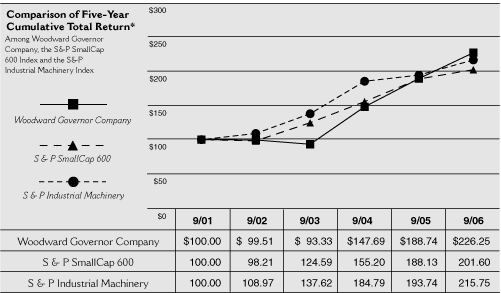
| The goal of the Compensation Committee (the “Committee”) is to establish and administer a compensation program that will (1) offer competitive compensation to attract, retain, and motivate a high-quality senior management team, and (2) link total annual cash compensation to Company and individual performance. The Committee believes proper administration of such a program will result in development of a management team that embraces the best long-term interests of Woodward and its shareholders. |
14
| To accomplish this goal, the Committee, comprised entirely of independent directors, structures total compensation packages comprised of base salary, short-term and long-term incentive compensation, and stock options. The Committee believes that the compensation programs for Woodward’s executive officers and key leaders should be based on the achievement of designated financial targets, individual contribution, and overall financial performance of the Company. | |
| Market-based compensation recognizes responsibilities and accountabilities for similarly situated positions within a representative comparative group as determined through appropriate survey data. Guidance is provided by an independent, professional compensation and benefits consulting firm. This process establishes base compensation and targets for incentive/ variable compensation. |
| Compensation Structure and Components | • individuals are assigned to salary grade ranges based upon their position | |
| • base salary is set within the range based upon actual job responsibilities, performance, and experience in the job | ||
| • annual incentive compensation targets of at least 10%, but not more than 75%, of base salary are established | ||
| • incentive compensation targets are tied to salary grade | ||
| Base Salary | Base salary and annual rate adjustments are determined at levels considered appropriate for comparable positions at peer companies with consideration of individual performance, experience, responsibilities, management and leadership abilities. | |
| Annual Incentive Compensation | Annual cash incentives are based on overall financial performance of the Company or individual groups or operating units, achievement of short-term objectives, and direct individual performance. If certain minimum target results are not achieved, no annual incentive is paid. If targeted levels are attained, annual incentive levels range from 10% to 75% of base salary. Participants have an opportunity to significantly increase their annual incentive compensation above targeted levels for outstanding performance, to a maximum of 200% target. For 2006, the financial performance goal was based on earnings per share and an ROIA metric. Based on financial and operational performance of the Company, the Committee determined payouts for 2006 would be approximately 65%-70% of target on the financial metrics. | |
| Long-Term Management Incentive Compensation | The Woodward Governor Company 2006 Omnibus Incentive Plan (the “2006 Plan”), approved by shareholders in January 2006, replaced the Woodward Governor Company 2002 Stock Option Plan and the Woodward Long-Term Management Incentive Compensation Plan. The Plan is intended to develop worker members’ sense of proprietorship and personal involvement in the development and financial success of the Company, and to encourage certain key management worker members and members of the Company’s Board of Directors to devote their best efforts to the business of the Company, thereby advancing the interests of the Company and its shareholders. In order to build a stable and experienced management team, the Committee seeks to maintain and strengthen these individuals’ desire to remain with the Company as well as to attract able individuals to become employees or serve as directors. The ultimate goal of the Plan is to encourage those individuals who are and will be responsible for the Company’s future growth and continued success to have a greater personal financial investment in the Company through ownership of its Common Stock. | |
| The Plan permits the grant of Nonqualified Stock Options, Incentive Stock Options, Stock Appreciation Rights, Restricted Stock, Restricted Stock Units, Performance Shares, Performance Units, Covered Employee Annual Incentive Awards, Cash-Based Awards, and Other Stock-Based Awards. To date the Committee has authorized the issuance of only nonqualified stock options to worker members and to independent directors. Management makes recommendations to the Committee on the size of grant, if any, for each participant. The Committee has delegated responsibility to the Nominating and Governance Committee for the determination of grants of Nonqualified Stock Options to the independent directors. The option price of the shares is determined at the date of the grant, which has been set forth in accordance with Woodward Policy 2-16 to be at the close of the Company’s trading blackout period, the second business day following public release of Woodward’s earnings for the fourth quarter, and will not be less than the closing price as quoted on the Nasdaq Global Select Market on that date. |
15
| In fiscal year 2006, 39 worker members and 7 independent directors were granted options under the 2006 Plan. | ||
| Prior to the adoption of the 2006 Plan, the Company had established a long-term, performance-based compensation plan. Eligibility was limited to a few top-level executives, as determined by the Compensation Committee. Under the terms of this plan, the Committee set long-term performance goals and confirms attainment or lack thereof as measured over three-year cycles. There remains one cycle under the prior plan — FY2005 — FY2007. The long-term cash award opportunities determined at the beginning of the performance cycle were based on goals associated with: | ||
| • average annual growth in earnings per share | ||
| • average annual return on invested assets | ||
| Under the 2006 Plan, the Committee expanded participation to include the leadership group comprised of 12 members of the Executive Council. New performance measures were also established and are to be measured over one initial two-year cycle of FY2006 — FY 2007 (such plan supercedes previous plan FY2005 — FY2007 with the exception of one participant who retired during the performance period) and then over three-year cycles. The following new performance measures were selected in order to continue to encourage consistent, sustainable Company growth. Performance is measured relative to the comparator companies in the S&P SmallCap 600 for the duration of the performance period: | ||
| • return on capital | ||
| • net earnings per share | ||
| A target award is established for each eligible executive based upon salary grade ranging from 40% to 50% of base salary. A threshold level of performance is established below which the executive receives no incentive award. Once threshold performance is achieved, the executive receives a minimum award equal to 5% to 10% of the target award. Above threshold performance, the award increases proportionally until target performance is achieved. The award opportunity continues to increase for above-target performance to a practical maximum of 200% of the target award. | ||
| Compensation of the Chief Executive Officer | Mr. Gendron has served as President and Chief Executive Officer since July 1, 2005. Mr. Gendron’s base salary of $500,000 was determined in the same manner as for all other executive officers. For fiscal year 2006, $233,275 annual incentive compensation was awarded to Mr. Gendron. The Committee has determined that the annual incentive for Mr. Gendron will be increased from 70% in 2006 to 75% of base salary beginning in FY2007. | |
| Under the Stock Option Plan, Mr. Gendron was awarded options in fiscal year 2007 to purchase 87,000 shares of Woodward common stock. | ||
| Mr. Gendron also receives long-term management incentive compensation under the 2006 Omnibus Incentive Plan. Mr. Gendron received $195,026 for the three-year period ended September 30, 2006. The amount of future incentive awards will be determined at the end of the initial 2-year period ending in 2007 and at each subsequent three-year period based on achievement of performance goals. |
Compensation Committee: | Michael T. Yonker, chairman | John D. Cohn | ||
| Paul Donovan | Mary L. Petrovich |
| Messrs. Cohn, Donovan and Yonker and Ms. Petrovich served as members of the Compensation Committee during the past fiscal year. The committee members have no interlocking relationships required to be disclosed by SEC rules. |
16
| Long-Term Compensation | |||||||||||||||||||||||||||||
| Annual Compensation | Awards | Payouts | |||||||||||||||||||||||||||
| Name and | Other | Securities | LTIP | ||||||||||||||||||||||||||
| Principal | Year Ended | Annual | Underlying | Payouts [$] | All Other | ||||||||||||||||||||||||
| Position | September 30 | Salary | Bonus (1) | Compensation | Options [#] | (2) | Compensation (3) | ||||||||||||||||||||||
| John A. Halbrook | 2006 | $ | 184,492 | $ | 236,075 | (5) | — | — | $ | 344,467 | $ | 83,640 | |||||||||||||||||
| Chairman(4) | 2005 | 545,090 | 686,879 | — | 24,000 | — | 60,692 | ||||||||||||||||||||||
| 2004 | 545,090 | 338,942 | — | 84,000 | — | 67,378 | |||||||||||||||||||||||
| Thomas A. Gendron | 2006 | 500,001 | 233,275 | — | 60,000 | 195,026 | 39,776 | ||||||||||||||||||||||
| President and | 2005 | 375,253 | 409,376 | — | 60,000 | — | 36,525 | ||||||||||||||||||||||
| Chief Executive Officer | 2004 | 300,040 | 146,589 | — | 72,000 | — | 35,033 | ||||||||||||||||||||||
| Robert F. Weber, Jr. | 2006 | 307,086 | 240,022 | (6) | — | — | — | 12,249 | |||||||||||||||||||||
| Chief Financial Officer | 2005 | 28,850 | 100,000 | — | 45,000 | — | — | ||||||||||||||||||||||
| and Treasurer (6) | 2004 | — | — | — | — | — | — | ||||||||||||||||||||||
| (1) | Bonus earned in respective fiscal year. |
| (2) | Amounts paid under the Long-Term Management Incentive Compensation Plan for the performance cycle ended September 30 of each fiscal year. |
| (3) | Company contributions to the Retirement Savings Plan, Unfunded Deferred Compensation Plan and Company payments made with respect to term life insurance, as well as amounts paid to Mr. Halbrook pursuant to his retirement, are as follows: |
| Unfunded Deferred Compensation | ||||||||||||||||||||||||||||||||||||
| Retirement Savings Plan | Plan | Term Life Insurance | ||||||||||||||||||||||||||||||||||
| Officer | 2006 | 2005 | 2004 | 2006 | 2005 | 2004 | 2006 | 2005 | 2004 | |||||||||||||||||||||||||||
| Halbrook | $ | 19,862 | $ | 26,260 | $ | 25,625 | $ | 43,191 | $ | 27,563 | $ | 36,851 | $ | 2,208 | $ | 6,869 | $ | 4,902 | ||||||||||||||||||
| Gendron | 25,650 | 24,825 | 24,225 | 12,558 | 10,560 | 9,668 | 1,568 | 1,140 | 1,140 | |||||||||||||||||||||||||||
| Weber | 9,900 | — | — | — | — | — | 2,349 | — | — | |||||||||||||||||||||||||||
| (4) | Mr. Halbrook retired as an officer of the Company on January 25, 2006; executive compensation is not provided for periods subsequent to that date. |
| (5) | Includes special bonus of $150,000 paid as a cash lump sum on January 25, 2006 in recognition of Mr. Halbrook’s orchestration of a very smooth management transition. |
| (6) | Mr. Weber was named Chief Financial Officer and Treasurer of the Company effective August 22, 2005. Mr. Weber also received an additional annual bonus in the form of a Company contribution into the Executive Benefit Plan (non-qualified deferred compensation plan) of $75,000 on December 31, 2005 and will continue to receive the additional amount each year through December 31, 2009. In addition, Mr. Weber received a guaranteed minimum bonus equivalent to target level of performance ($165,022) under the currently effective Management Incentive Plan for fiscal year 2006. |
| • | any person, entity, or group (with certain exceptions) becomes the beneficial owner of 15% or more of the outstanding shares of Woodward common stock; or |
| • | there is a change in a majority of the Board during any two-year period other than by election or nomination by a vote of two-thirds of the Board members as of the beginning of the period; or Woodward’s shareholders approve a merger, consolidation, sale of assets, or share exchange resulting in Woodward’s shareholders owning less than 51% of the combined voting power of the surviving corporation following the transaction; or |
| • | Woodward’s shareholders approve a liquidation or dissolution. |
17
| Potential Realizable Value at | ||||||||||||||||||||||||
| Assumed Annual Rates of | ||||||||||||||||||||||||
| % of Total | Stock Price Appreciation for | |||||||||||||||||||||||
| Number of | Options Granted | Option Term (3) | ||||||||||||||||||||||
| Securities Underlying | to Employees in | Exercise | Expiration | |||||||||||||||||||||
| Name | Options Granted (1) | Fiscal Year | Price (2) | Date | 5%($) | 10%($) | ||||||||||||||||||
| Thomas A. Gendron | 60,000 | 18.0% | $ | 27.00 | 11/23/2015 | $ | 1,018,809 | $ | 2,581,863 | |||||||||||||||
| (1) | Consists of non-qualified options issued for a ten-year term. |
| (2) | Closing price of common stock as reported on Nasdaq as of the date of grant. |
| (3) | The potential realizable value is calculated based on the term of the option at its time of grant (ten years). It is calculated assuming that the stock price on the date of grant appreciates at the indicated annual rate compounded annually for the entire term of the option and the option is exercised and sold on the last day of its term for the appreciated stock price. No gain to the optionee is possible unless the stock price increases over the option term. |
| Number of Securities | Value of Unexercised | |||||||||||||||
| Shares | Underlying Unexercised | In-the-Money Options | ||||||||||||||
| Acquired on | Value | Options at Fiscal Year-End (#) | at Fiscal Year-End ($) | |||||||||||||
| Name | Exercise (#) | Realized ($) | Exercisable / Unexercisable | Exercisable / Unexercisable | ||||||||||||
| John A. Halbrook | 92,880 | $ | 2,117,765 | 1,028,595 / 78,750 | $ | 22,904,256 / $1,264,445 | ||||||||||
| Thomas A. Gendron | 16,320 | 403,100 | 222,666 / 156,000 | 4,174,103 / 1,744,849 | ||||||||||||
| Robert F. Weber, Jr. | 0 | 0 | 11,250 / 33,750 | 59,250 / 177,751 | ||||||||||||
| Number of Securities | ||||||||||||
| Number of Securities to | Remaining Available for | |||||||||||
| be Issued upon | Weighted-Average | Future Issuance under | ||||||||||
| Exercise of | Exercise Price of | Equity Compensation Plans | ||||||||||
| Outstanding Options, | Outstanding Options, | (excluding securities reflected | ||||||||||
| Plan Category | Warrants, and Rights | Warrants, and Rights | in the first column) | |||||||||
| Equity compensation plans approved by security holders | 2,904,418 | $16.19 | 3,703,000 | |||||||||
| Equity compensation plans not approved by security holders | 0 | 0 | 0 | |||||||||
| Total | 2,904,418 | $16.19 | 3,703,000 | |||||||||
18
| Estimated Future Payouts Under | ||||||||||||||||||||
| Number of | Performance or | Non-Stock Price-Based Plans | ||||||||||||||||||
| Shares, Units, | Other Period Until | |||||||||||||||||||
| Name | or Other Rights | Maturation or Payout | Threshold | Target | Maximum | |||||||||||||||
| John A. Halbrook | — | 3 years | $ | — | $ | — | $ | — | ||||||||||||
| Thomas A. Gendron(1) | — | 2 years | 125,000 | 250,000 | 500,000 | |||||||||||||||
| Thomas A. Gendron(2) | — | 3 years | 125,000 | 250,000 | 500,000 | |||||||||||||||
| Robert F. Weber | — | 3 years | — | — | — | |||||||||||||||
| (1) | Amounts shown were calculated using the salaries for the named executive officers for LTMIC as of the beginning of the initial performance period October 1, 2005 through September 30, 2007. |
| (2) | Amounts shown were calculated using the salaries for the named executive officers for LTMIC as of the beginning of the performance period October 1, 2005 through September 30, 2008. |
| Audit Committee: | Paul Donovan, Chairman Larry E. Rittenberg Michael T. Yonker | John D. Cohn James R. Rulseh |
19
| Year ended September 30 | 2006 | 2005 | ||||||
| Audit Fees | $ | 1,057,000 | $ | 1,242,500 | ||||
| Audit-Related Fees(1) | 12,116 | 0 | ||||||
| Tax Fees | 150,092 | 264,222 | ||||||
| All Other Fees | 0 | 678 | ||||||
Total | $ | 1,219,208 | $ | 1,507,400 | ||||
| (1) | Audit-Related Fees consists of assurance and related services that are reasonably related to the performance of the audit of the financial statements. This category includes fees for pension and benefit plan audits, consultations concerning accounting and financial reporting standards, assistance with statutory financial reporting, consultation on general internal control matters or Sarbanes-Oxley assistance, due diligence related to mergers and acquisitions, and other auditing procedures and issuance of special purpose reports. |
| PROPOSAL 2 — | RATIFICATION OF APPOINTMENT OF INDEPENDENT REGISTERED PUBLIC ACCOUNTING FIRM |
20

21
| (a) | The name and residence address of the stockholder making the nomination; |
| (b) | Such information regarding each nominee as would have been required to be included in a proxy statement filed pursuant to the proxy rules of the Securities and Exchange Commission had the nominee been nominated by the Board of Directors; and |
| (c) | The signed consent of each nominee to serve as a member of the Board of Directors if elected, and the signed agreement of each nominee that if elected he or she will be guided by the philosophy and concepts of human and industrial association of the Corporation as expressed in its Constitution in connection with the nominee’s service as a member of the Board of Directors. |
A-1
| 1. | Appointment, retention and oversight of the work of any accounting firm engaged (including resolution of disagreements between management and the auditor regarding financial reporting) for the purpose of preparing or issuing an audit report or performing other audit, review or attest services for the Company. The accounting firm is engaged by the Committee and reports directly to the Committee. |
| 2. | Review and discuss with management and the lead internal auditor the internal audit plan and budget, including the audit/risk assessment and the results of audit activities. Review and approve changes in the appointment of the internal audit leader. Periodically assess the quality of the internal audit activity. |
| 3. | Review and discuss with management the audited financial statements. |
| 4. | Discuss with the independent auditors any matters required to be discussed under current auditing standards, including Statement of Auditing Standards No. 61, and other matters as may become required by regulatory agencies. |
| 5. | Obtain from the independent auditors the written disclosures and the letter required by Independence Standards Board Standard No. 1; discuss with the auditors any disclosed relationships or services that may impact the objectivity and independence of the auditors; and take appropriate actions with respect to the independence of the auditors. |
| 6. | Recommend to the Board of Directors, based on reviews and discussions referred to in items3-5, that the audited financial statements be included in the Company’s Annual Report on Form 10-K. |
| 7. | Review with management and the independent auditors the Company’s quarterly financial statements prior to filing of its Form 10-Q and earnings releases. |
| 8. | Review major changes to the Company’s auditing and accounting principles and practices. |
| 9. | Discuss with the external auditor, their opinion on the acceptability and appropriateness of material accounting principles and practices implemented by the Company. |
| 10. | Review management’s internal control report prior to its inclusion in the Company’s annual report, which addresses the effectiveness of the Company’s internal controls and procedures for purposes of financial reporting. Review and discuss with the external auditor, the internal auditor, and management all identified significant or material deficiencies in internal control over financial reporting. |
| 11. | Establish procedures for the receipt, retention, and treatment of complaints received by the Company regarding accounting, internal accounting controls, or auditing matters and the confidential, anonymous submission by employees of the Company of concerns regarding questionable accounting or auditing matters. |
| 12. | Pre-approve all audit, review or attest engagements and permissible non-audit services to be provided to the Company by the independent auditors, and approve the fees of the independent auditors for such services; provided, however, that in no event shall the Committee have the authority to pre-approve any non-audit services which may not be performed by the independent auditors under applicable law. |
| 13. | Review the findings, comments and recommendations of the independent auditors. |
| 14. | Provide a report in the Company’s proxy statement as required by the Securities and Exchange Commission. |
B-1
B-2
| PROXY | PROXY |
| 1. | ELECTION OF DIRECTORS o FOR o WITHHOLD o FOR ALL EXCEPT |
| 01 | John D. Cohn | ||
| 02 | Michael H. Joyce | ||
| 03 | James R. Rulseh |
| 2. | PROPOSAL TO RATIFY THE APPOINTMENT OF PRICEWATERHOUSECOOPERS LLP AS INDEPENDENT REGISTERED PUBLIC ACCOUNTING FIRM FOR THE YEAR ENDING SEPTEMBER 30, 2007 | |
| o FOR o AGAINST o ABSTAIN | ||
| 3. | IN THEIR DISCRETION, THE PROXIES ARE AUTHORIZED TO VOTE UPON SUCH OTHER MATTERS AS MAY PROPERLY COME BEFORE THE MEETING. |
| Date: | ||||
| Signature | ||||
| Signature (if held jointly) | ||||